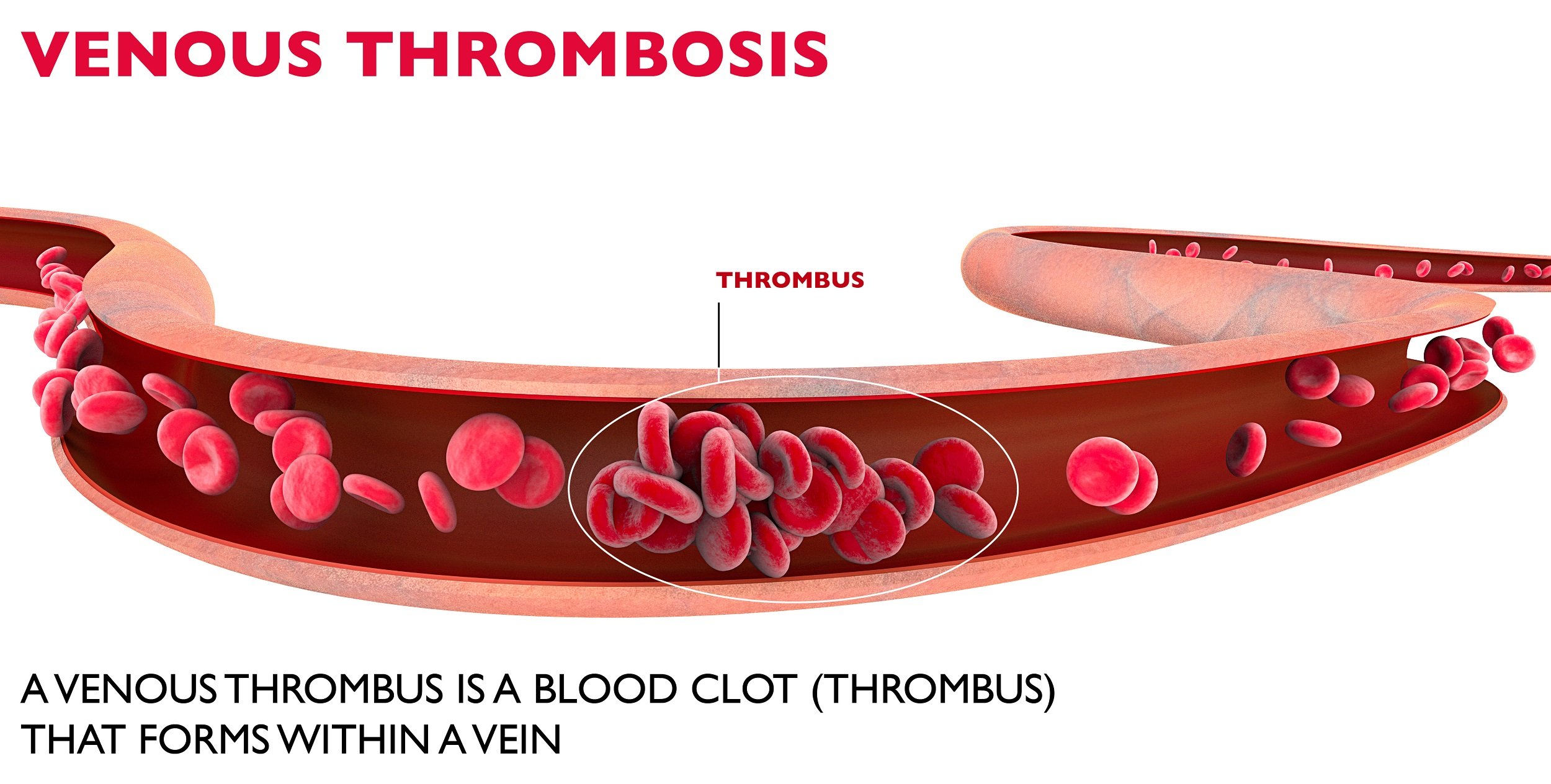Thrombophilia
Thrombophilias can be defined as a group of inherited or acquired disorders that increase a person’s risk of developing thrombosis (abnormal “blood clotting”) in the veins or arteries.
What is Thrombophilia?
Thrombophilias can be defined as a group of inherited or acquired disorders that increase a person’s risk of developing thrombosis (abnormal “blood clotting”) in the veins or arteries.
The human body is equipped with a sophisticated and well-balanced blood coagulation (or clotting) system, in which platelets (the “clotting” blood cells) and multiple coagulation proteins mingle in order to avoid both excessive bleeding and excessive clotting. Thrombus (blood clot) formation is a good thing after injuries to blood vessels, regardless of whether the injury results from an accidental cut, major trauma, a broken bone, or surgery. If blood clotting did not occur, you would experience unstoppable (and even life threatening) bleeding. This normal blood clot formation should be localized to the area where blood vessel injury occurred and should be stopped as soon as the leak of blood from the vessels is contained and/or the vessel injury is healed or repaired. In the presence of thrombophilias, the well-balanced coagulation system has a predisposition toward thrombosis, which is also referred to as “hypercoagulability” or “hypercoagulable state.”
Thrombophilias can be inherited (hereditary), acquired (not inherited), or both. Inherited thrombophilias are abnormalities of the genes that are responsible for making the coagulation proteins (known as genetic mutations). Acquired thrombophilias are due to increased levels of certain clotting substances in the blood or special proteins called antibodies which may also lead to clotting. The most common inherited thrombophilias include Factor V Leiden (a symptom-free condition that increases the risk of deep vein thrombosis), the Prothrombin gene mutations, as well as the uncommon but well-known deficiencies of Protein C, Protein S, or Antithrombin. Individuals who are born with an inherited thrombophilia are also referred to as “carriers” of that particular genetic mutation. The most common acquired thrombophilias are commonly encountered during surgery, injury, or medical conditions including congestive heart failure and certain respiratory conditions, and these are called Antiphospholipid antibodies (APLA). These represent a family of several different individual antibodies which may, as a group or independently, lead both to clotting events and also recurrent miscarriages. Some thrombophilias can have both a genetic predisposition and be acquired. Research studies have estimated that nearly 10% of the world population has an underlying thrombophilia, the most common being the Factor V Leiden and the Prothrombin gene mutations.
Both inherited and acquired thrombophilias appear to “tilt” the well-balanced coagulation system towards clotting (thrombosis). Such an imbalance in the coagulation system results in a greater risk of clotting events, such as deep venous thrombosis (DVT) or pulmonary embolism (PE). However, the simple fact that a person that has a thrombophilia has a greater chance of developing abnormal clotting than a person without thrombophilia does not mean that the former individual will ever have a clotting event. Fortunately, not all people with thrombophilia will have a blood clot in their lifetime, whereas unfortunately, many patients who do experience thrombotic events (such as DVT) may not have any detectable thrombophilia at all.
Risk Factors
Coming Soon!
Resources
Coming Soon!
Be The Voice For Patients Like You!
Vascular Cures is inviting patients and advocates to share their stories, advise on our programs, and help us advocate for patient needs. Patients as Partners is a community where patients are heard, empowered, and encouraged to impact the health system. Learn more and request more information here.


